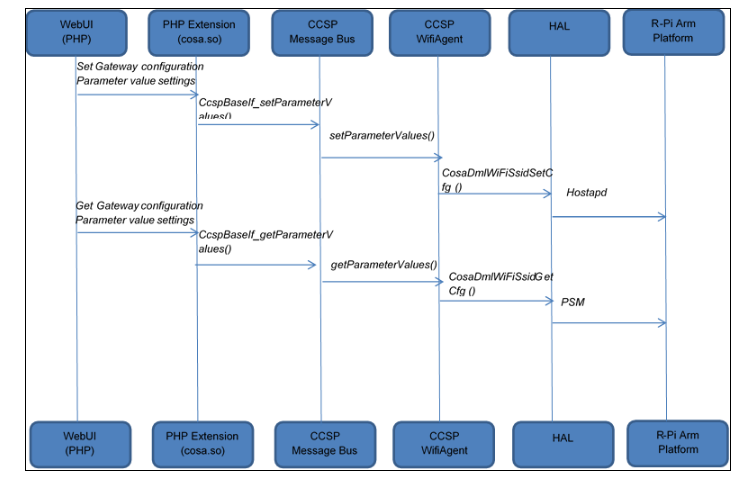Hotspot is a CCSP component that provides the connectivity to the users of Service provider even if not in the range of home device WiFi. This component provides wireless connectivity to a user from a third persons device belonging to a same service provider. This helps the users to stay connected over the service provider WiFi network even outside the home network.
Hotspot offers connectivity over both 2.4GHz and 5GHz frequency range. The SSID for hotspot is same for all the devices. From WEBUI a MSO user can see the exhaustive list of all the client devices connected to the gateway over Hotspot SSID.
What is Passpoint (hotspot 2.0)?
Wi-Fi CERTIFIED Passpoint® is an industry-wide solution to streamline network access in Wi-Fi hotspots and eliminate the need for users to find and authenticate a network each time they connect. In Wi-Fi networks that do not support Passpoint®, users must search for and choose a network, request the connection to the access point (AP), and re-enter authentication credentials each visit to gain access to a hotspot location, such as a restaurant, stadium, airport, or hotel. Passpoint automates the entire process, enabling a seamless connection between Wi-Fi hotspot networks and mobile devices, all while delivering enterprise-level security.
Passpoint improves the mobile user experience by offering:
In the Wi-Fi CERTIFIED Passpoint® certification program, mobile devices use Online Sign-Up (OSU) to accomplish registration and credential provisioning to obtain secure network access. Each Service Provider network has an OSU Server, an AAA Server, and access to a certificate authority (CA).
Issues certificates (i.e., creates and signs them)
Maintains certificate status information and issues Certificate Revocation Lists (CRLs)
Publishes its current (unexpired) certificates and CRLs so users can obtain the information they need to implement security services
Maintains archives of status information about the expired or revoked certificates it issued
Seamless network access and roaming between hotspots
![]()
A mobile device uses ANQP to perform network discovery. The connection manager within the mobile device compares the information obtained from the hotspot via ANQP to the configuration information stored in the device, including Home SPpolicy and user preferences, to automatically select a hotspot network. The policy information is provisioned using methods that are outside the scope of the Passpoint certification
These elements are used by the client stations to discover information that is not sent in beacons
.ANQP Query list — the Query List is sent by the client station in a GAS Request, indicating a list of elements (the elements listed below) it would like to receive in a GAS Response.
ANQP Capability list — this element is a bit like a checklist, identifying the ANQP elements that are supported (and will be returned in the GAS Response) by the AP.
Extensible Authentication Protocol ('EAP') is an authentication framework frequently used in network and internet connections. It is defined in RFC 3748, which made RFC 2284 obsolete, and is updated by RFC 5247.
EAP is an authentication framework for providing the transport and usage of material and parameters generated by EAP methods. There are many methods defined by RFCs and a number of vendor specific methods and new proposals exist. EAP is not a wire protocol; instead it only defines the information from the interface and the formats. Each protocol that uses EAP defines a way to encapsulate by the user EAP messages within that protocol's messages.
EAP is in wide use. For example, in IEEE 802.11 (WiFi) the WPA and WPA2 standards have adopted IEEE 802.1X (with various EAP types) as the canonical authentication mechanism.


Retrieve value using dmcli command.
dmcli eRT getv Device.WiFi.SSID.5.Enable
CR component name is: eRT.com.cisco.spvtg.ccsp.CR
subsystem_prefix eRT.
getv from/to component(eRT.com.cisco.spvtg.ccsp.wifi): Device.WiFi.SSID.5.Enable
Execution succeed.
Parameter 1 name: Device.WiFi.SSID.5.Enable
type: bool, value: true
|